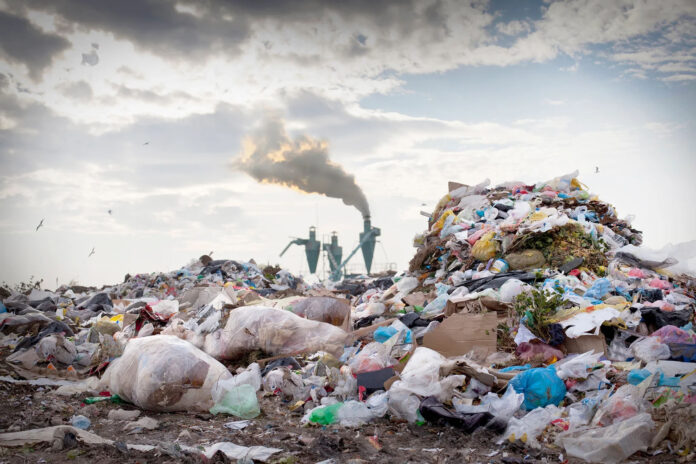With the latest meteorological reports on the extremity of weather conditions in Pakistan, the magnitude of an imminent climate catastrophe is evident– the unforgiving tremors of which can be already felt. The most recent events– the record-breaking heatwave, the glacial outburst in Hunza, and the droughts in Cholistan and Pir Koh– are all horrifying manifestations of nature’s wrath.
With hellish temperatures, the environment is wreaking a rebellious havoc avenging the atrocities committed against it by humankind. Thus, it is a matter of pressing urgency that we start addressing climate change rather seriously. In this case, we can easily see our media failing to fulfil its role. There is a serious lag in our response to climate change, with minimal state action trying to fill in the gap, with neither the media nor the civil society playing an active role in addressing this emergency.
In the end, it all depends on our will to address and rectify, and, our resolve to recognize our lack of seriousness as an integral part of this environmental crisis that we face
One report by the Intergovernmental Panel on Climate Change [IPCC] points undisputedly towards anthropomorphic interventions as the primary cause of climate change, and perhaps common consciousness validates it further.
With growing economies and rampaged insensitivity towards common goods it is of no surprise that the unpredictability of Mother Nature’s behaviour postures retribution.
Here, Pakistan becomes an important case point that demonstrates this. The geographical location of the country, given its diverse landscape and thus weather variability, makes it highly sensitive to climate change. This sensitivity does not hinge solely on geographical conditions, but also on the socio-economic make-up of the country with agriculture being a significant contributor to the Pakistani society making up around 36 percent of total employment, according to World Bank figures in 2020, which although reduced because of the startup boom, nevertheless is still not insignificant.
The above underlines an imperative that highlights that the impending danger pertaining to Pakistan’s climate doom most closely afflicts two important aspects: food security and displacement. Their effects are mutually reinforcing.
Food security pertains to the availability of food, in the production of which suitable weather is crucial. Unpredictable weather conditions– rain and heat– negatively impact agricultural yields (both quantity and quality), as wel as availability of (rich) agricultural lands, livestock and freshwater.
According to a report by the International Federation of Red Cross [IFRC] Climate Center 2021, several studies have tried to predict agricultural productivity under the inluence of the climate change trends that prevail so far. These estimates paint a rather gloomy picture, a glimpse of which is necessary.
One of the studies conducted by Delahvi et al. 2015 quotes a decline of approximately eight-10 percent in agricultural yields by 2040, with a temperature increase between just 0.5-2 percent. This implies an exacerbation of the already food shortage that afflicts the country as these figures are nowhere to be improved, at least in the near future.
The impact of this is also multifaceted. The spill-over from the agri-insecurity can be both quantitative and qualitative. The former includes larger economic impacts including increased import bills and deficits, unemployment and inequality. The latter includes aspects of multidimensional poverty pertaining deeply to health issues such as malnutrition and increased vulnerability to disease.
Moreover, food insecurity does not mainly rest with crop-related agricultural activities but branch out to livestock and fishing inter alia other sub-domains. The IFRC report estimates the livestock contribution to be 53 percent of the total agricultural GDP and 12 percent to national figures. Extremity and instability of weather conditions leads to stressed out livestock which will consequently reduce dairy and meat production– consumption of which is quite high in the typical Pakistani diet. A similar picture can be drawn for fisheries.
Cumulatively this adds to the vicious circle of poor living standards and inequity in the country. As far as displacement is concerned, when climate change makes living conditions hostile, it creates what are called climate refugees. Mostly concentrated in Sindh and Balochistan, rising sea-levels and soil erosion not only degrades the aquatic ecosystem and reduces the catch but at the same time, becomes a major contributing factor towards inland displacement.
Land submerges in water so people can’t live there, as a consequence of which they have to move. For people living in extreme hot weathers such as those in the Thar region, they are endangered with the threat of severe droughts and extreme water stress. With excruciating heat waves to compound the effect of lack of basic necessities, these people have to migrate. Most of these move to the urban centres looking for refuge and access to a better life. But given the already dense population concentration in urban centers, scarce resources are further strained leading to more issues than solutions.
A similar picture can be drawn for the inhabitants of the mountain who fall prey to glacial outbursts and mass flooding consequently adding to displacement.
Furthermore, it is of no surprise that we are a water-stressed country and so climate change is making it worse as it obfuscates water availability both qualitatively and quantitatively. Lack of rainfall not only results in droughts but also leads to the concentration of pollutants in water making it unfit for consumption. On the other hand, extreme rain showers not only result in flooding but also flush out urban pollutants into groundwater resources thus leading to increased contamination. This may lead to a surge in vector-borne diseases, an example of which is the cholera emergency we are afflicted with today.
Given the diversity of landscape and weather conditions, the climate doom in the country is unequivocally varied and context specific but is still looming for the entire nation. For effective
‘appeasement’ efforts with nature, we must translate our words into action. Awareness is one core aspect, and perhaps an obvious one. There is a dire need to identify that this existential issue has intensified and affects us at a species level. The main problem lies not more in the issue that afflicts us but in the inability to identify that the problem exists.
Implementation wise, the local government system can play a pivotal role. Its proximity to the context allows it to have a hands-on approach in finding solutions to the problem. Communication and information gathering can be better; community response and ownership is likely to be prompt and positive. It is also more likely to be resource-efficient and monitoring can be streamlined and deeply evaluative.
In the end, it all depends on our will to address and rectify, and, our resolve to recognize our lack of seriousness as an integral part of this environmental crisis that we face.























